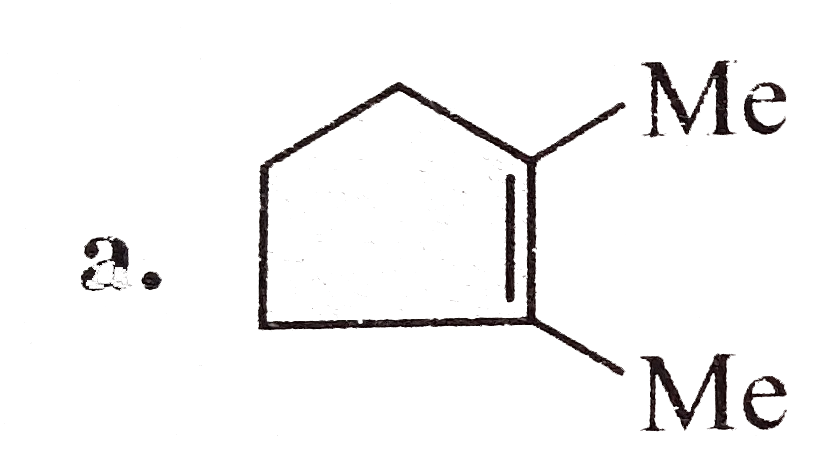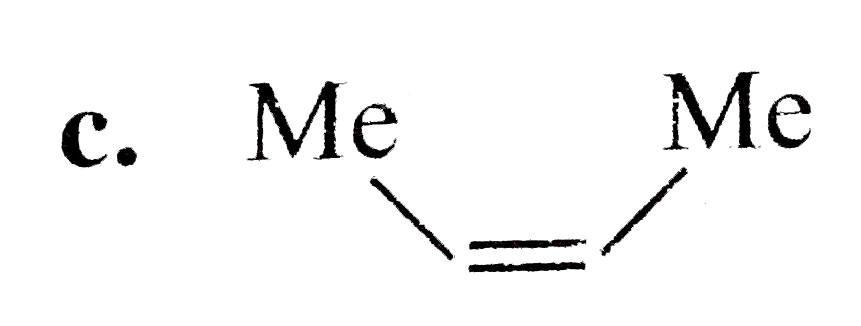Compare the results of hydroboration oxidation and mercuric ion-catalysed hydration for
2-butyne
To compare the results of hydroboration-oxidation and mercuric ion-catalyzed hydration for 2-butyne, we will analyze each reaction step by step.
Step 1: Hydroboration-Oxidation of 2-Butyne
1. Hydroboration:
- 2-butyne (CH₃C≡CCH₃) is treated with borane (BH₃) in the presence of tetrahydrofuran (THF).
- The triple bond (C≡C) undergoes hydroboration, where BH₃ adds across the triple bond.
- According to the anti-Markovnikov rule, the boron atom (BH₂) attaches to the less substituted carbon (the one with more hydrogen atoms), while hydrogen (H) attaches to the more substituted carbon.
- This results in the formation of a trialkylborane intermediate.
2. Oxidation:
- The trialkylborane is then oxidized using hydrogen peroxide (H₂O₂) and sodium hydroxide (NaOH).
- During this step, the BH₂ group is replaced by an OH group, leading to the formation of an enol (CH₃C(OH)=C(CH₃)H).
- The enol is unstable and undergoes tautomerization to form a more stable keto form.
3. Tautomerization:
- The enol converts to a ketone by shifting the double bond and transferring a hydrogen atom.
- The final product is 2-butanone (CH₃C(=O)CH₂CH₃).
Step 2: Mercuric Ion-Catalyzed Hydration of 2-Butyne
1. Hydration:
- 2-butyne is treated with mercuric sulfate (HgSO₄) in the presence of sulfuric acid (H₂SO₄) and water.
- This reaction follows Markovnikov's rule, where the mercuric ion (Hg²⁺) facilitates the addition of H and OH across the triple bond.
- The hydrogen (H) attaches to the more substituted carbon, while the hydroxyl group (OH) attaches to the less substituted carbon.
2. Formation of Enol:
- Similar to the hydroboration-oxidation, this reaction also results in the formation of an enol (CH₃C(OH)=C(CH₃)H).
3. Tautomerization:
- The enol formed is again unstable and tautomerizes to form the stable keto form.
- The final product is also 2-butanone (CH₃C(=O)CH₂CH₃).
Conclusion
- Both hydroboration-oxidation and mercuric ion-catalyzed hydration of 2-butyne yield the same final product, which is 2-butanone.
- The key difference lies in the mechanism of addition: hydroboration follows the anti-Markovnikov rule, while mercuric ion-catalyzed hydration follows the Markovnikov rule.
- 2-butyne (CH₃C≡CCH₃) is treated with borane (BH₃) in the presence of tetrahydrofuran (THF).
- The triple bond (C≡C) undergoes hydroboration, where BH₃ adds across the triple bond.
- According to the anti-Markovnikov rule, the boron atom (BH₂) attaches to the less substituted carbon (the one with more hydrogen atoms), while hydrogen (H) attaches to the more substituted carbon.
- This results in the formation of a trialkylborane intermediate.
- The trialkylborane is then oxidized using hydrogen peroxide (H₂O₂) and sodium hydroxide (NaOH).
- During this step, the BH₂ group is replaced by an OH group, leading to the formation of an enol (CH₃C(OH)=C(CH₃)H).
- The enol is unstable and undergoes tautomerization to form a more stable keto form.
- The enol converts to a ketone by shifting the double bond and transferring a hydrogen atom.
- The final product is 2-butanone (CH₃C(=O)CH₂CH₃).
- 2-butyne is treated with mercuric sulfate (HgSO₄) in the presence of sulfuric acid (H₂SO₄) and water.
- This reaction follows Markovnikov's rule, where the mercuric ion (Hg²⁺) facilitates the addition of H and OH across the triple bond.
- The hydrogen (H) attaches to the more substituted carbon, while the hydroxyl group (OH) attaches to the less substituted carbon.
- Similar to the hydroboration-oxidation, this reaction also results in the formation of an enol (CH₃C(OH)=C(CH₃)H).
- The enol formed is again unstable and tautomerizes to form the stable keto form.
- The final product is also 2-butanone (CH₃C(=O)CH₂CH₃).
- The key difference lies in the mechanism of addition: hydroboration follows the anti-Markovnikov rule, while mercuric ion-catalyzed hydration follows the Markovnikov rule.
Topper's Solved these Questions
- BOOK - MOTIONCHAPTER - HYDROCARBON EXERCISE - QUESTIONS6videos
HYDROCARBON
- BOOK - MOTIONCHAPTER - HYDROCARBON EXERCISE - Exercise - 185videos
HYDROCARBON
- BOOK - MOTIONCHAPTER - GRIGNARD REAGENTEXERCISE - EXERCISE-216videos
GRIGNARD REAGENT
- BOOK - MOTIONCHAPTER - IONIC EQUILIBRUIMEXERCISE - Exercise -4 (Level -II)14videos
IONIC EQUILIBRUIM
Similar Questions
Knowledge Check
- Question 1 - Select One
The product of acid catalyzed hydration of 2−pheny1propene is
A3-phenyl-2-propanolB1-phenyl-2-propanolC2-phenyl-2-propanolD2-phenyl-1-propanol - Question 2 - Select One
The hydroboration oxidation of 2-methyl propene yields-
A1∘ alcoholB2∘ alcoholC3∘ alcoholDNone - Question 3 - Select One or More
Hydroboration oxidation and acid hydration will yield the same product in case of:
A Bb. Me−≡−MeC
Bb. Me−≡−MeC D
D
The product of acid catalysed hydration of 2-phenylpropene is
View SolutionAcid catalysed hydration, hydroboration - oxidation, and oxymercuration - demercuration will give different products in
View SolutionWhich of the following alkene on acid catalysed hydration form propan-2-ol
View SolutionThe major product obtained on acid-catalysed hydration of 2-phenylpropane is
View SolutionWhich of the following alkenes will give same product by any method out of hydration, hydroboration-oxidation and oxymercuration-demercuration?
View Solution

